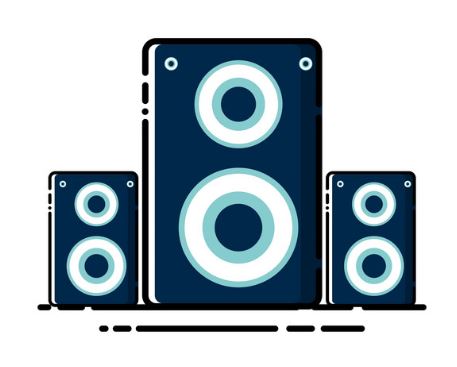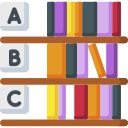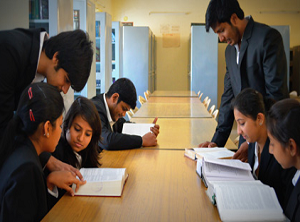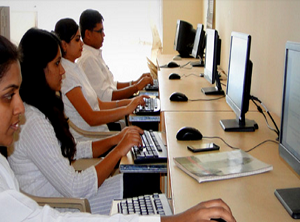
Bangalore Institute of Legal Studies, Basavanagudi, Bangalore
In 1942, the first step was taken by establishing the Bangalore High School in a rented building at Visveswarapuram, Bangalore. Under the stewardship of its President-Late Rao Bahadur Professor B.Venkateshchar, Retired Director of the Indian Institute of Science, Bangalore, and the dedicated efforts of the Secretary Late Dharmaprakasha L.S. Venkaji Rao, a prominent businessman, the Managing Committee started the Vijaya College in 1945 in the same premises with the present Pre-University courses.
Courses
Highlights
- Affiliation: Karnataka State Law University (KSLU), Hubli.
- Approval: Bar Council of India (BCI).
- Courses Offered: B.A. LL.B. (5-year integrated law program).
- Focus: Strong emphasis on legal education with arts subjects.
- Faculty: Experienced and knowledgeable faculty.
- Practical Training: Moot courts, internships, and legal workshops.
- Infrastructure: Modern classrooms, well-stocked library, and moot court halls.
- Placements: Active placement cell assisting with internships and jobs.
- Extracurriculars: Legal debates, seminars, cultural activities, and legal aid camps.
- Location: Prime location in Bangalore, providing ample legal opportunities.
Bangalore Institute of Legal Studies Bangalore Admission Process
The admission process for Bangalore Institute of Legal Studies (BILS) is structured and follows the guidelines set by the Karnataka State Law University (KSLU) and the Bar Council of India (BCI). Below is the admission process step-by-step:
Eligibility Criteria:
Academic Qualification:
- Candidates must have passed their 10+2 (or equivalent) examination from a recognized board.
- A minimum of 45% marks is required for general category students (40% for SC/ST candidates).
Age Limit:
- Generally, there is an upper age limit of 20 years for general category and 22 years for SC/ST/OBC candidates (as per BCI norms).
Application Process:
Application Form:
- Candidates can obtain the application form either online from the official website of BILS or in person from the institute.
Documents Required:
- 10th and 12th mark sheets.
- Transfer certificate and migration certificate (if applicable).
- Proof of age (birth certificate or school certificate).
- Category certificate (for SC/ST/OBC candidates).
- Passport-sized photographs.
Bangalore Institute of Legal Studies Bangalore Course
The Bangalore Institute of Legal Studies (BILS) offers a flagship integrated law program that combines legal education with arts subjects.
- B.A. LL.B.
Bangalore Institute of Legal Studies Bangalore Eligibility
The eligibility criteria for admission to the Bangalore Institute of Legal Studies (BILS) for its B.A. LL.B. (5-year integrated program) require candidates to have completed their 10+2 or equivalent examination from a recognized board, with a minimum of 45% aggregate marks for general category students and 40% for SC/ST candidates.
|
Course |
Duration |
Eligibility |
|
B.A. LL.B. |
5 Years |
10+2 : 45 % Exams : CBSE 12thKarnataka 2nd PUC |
Bangalore Institute of Legal Studies Bangalore Fees
The fee structure at Bangalore Institute of Legal Studies (BILS) for its B.A. LL.B. (5-year integrated program) is designed to be competitive and accessible for students pursuing legal education.
|
Course |
Duration |
Fees |
|
B.A. LL.B. |
5 Years |
- |
Bangalore Institute of Legal Studies Bangalore Review
Bangalore Institute of Legal Studies (BILS) is well-regarded for its academic rigor, practical legal training, and holistic student development. Reviews from students and alumni often highlight the institute's experienced faculty, who bring a blend of theoretical knowledge and practical insights to the classroom.
|
Placements |
5.0 |
|
Infrastructure |
5.0 |
|
Faculty & Course Curriculum |
5.0 |
|
Crowd & Campus Life |
5.0 |
|
Value for Money |
5.0 |
Bangalore Institute of Legal Studies Bangalore Ranking
Bangalore Institute of Legal Studies (BILS) holds a respectable position among law schools in Bangalore and is known for its commitment to quality legal education. While it may not always appear in national rankings alongside India's top-tier law schools like the National Law Universities (NLUs), BILS has established itself as a solid regional institution.
Faculty (10)
';|
S.no. |
Faculty |
|
1. |
Ms. Ambika Bhat K S |
|
2. |
Ms. Aysha Fida |
|
3. |
Mrs. Pushpalatha M |
|
4. |
Ms. Mishal Ann James |
|
5. |
Mrs. Sadulnisa |
|
6. |
Ms. Debasree Ghosh |
|
7. |
Sri. Srinivas. K.L Asst. Professor B.A.(Law) LL.B. LL.M. (International Law) |
|
8. |
Sri. Pradeep Kumar Bharadwaj Asst. Professor M.A. (Sociology), M.A. (English Literature), LL.M in Business Laws, M.B.L.(NLSIU), (Ph.D.) |
|
9. |
Dr. Srinivasa Murthy Associate Professor M.A. Kannada, Ph.D. |
|
10. |
Smt. Chandrika S R Asst. Professor M.A. Sociology, B.Ed. |
Facilities

AC Classrooms

Auditorium

Banks Facilities

Cafeteria

Convenience Store

Dance Room

Design Studio

Gym

Hostel

Labs

Medical Facilities
_facility.png)
Moot Court (Law)

Music Room

Ransomware by ./M789

Shuttle Service

Sports Complex

Wi-Fi Campus
Gallery



Contact
Vijaya College Campus, R.V. Road, Basavanagudi, Bangalore - 560 004
1993.bils@gmail.com
-
PGDM-Post Graduate Diploma in Management
Total Fee: INR 745000
-
B.Com Bachelor of Commerce
Total Fee: INR 240000
-
PGDM-Post Graduate Diploma in Management
Total Fee: INR 745000
-
B.Com Bachelor of Commerce
Total Fee: INR 240000
-
PGDM-Post Graduate Diploma in Management
Total Fee: INR 745000
-
B.Com Bachelor of Commerce
Total Fee: INR 240000
-
PGDM-Post Graduate Diploma in Management
Total Fee: INR 745000
-
B.Com Bachelor of Commerce
Total Fee: INR 240000
Highlights
- International Institute of Business Studies (IIBS) is an AICTE Approved college which is recognized by Ministry of HRD, Government of Indias
- IIBS rated India’s No.1 emerging B-School in placement by Samaja Parivarthana
- Faculty of IIBS consists of experienced corporate faculty with 65% Ph.D. holders
- Ranked 2nd among 'Top 10 Southern B Schools' by Silicon India, 2017
- Ranked 3rd in Placement among the Best B-School in India 2017 by Silicon India
Modern Facilities
- Smart Classroom: IIBS provides fully equipped classroom with air-conditioned, projectors, remote controlled LCD and high speed connected computers and cordless microphones
- Library: It is fully equipped by highly information recourses like latest periodicals, reference texts, management text books, national and international journals and DVDs and well organized
- Digital Library: Students of IIBS can be access the digital library through any computers by using their ID and password
- Auditorium: IIBS auditorium is fully furnished and laced with all modern devices to more impactful view
- Hostel: IIBS provides hostel accommodation for boys and girls with mesh facility
Conducting IIMs have been changed the pattern of the CAT exams several times over the years. It is extremely beneficial for the aspirants to know the CAT paper pattern as it helps in preparation and the aspirants can prepare according to the pattern and weightage of the topics.
Overview of the Exam Pattern of CAT 2020
| Mode of the Exam | Online Only |
|---|---|
| Total number of Questions | 100 |
| Total Marks | 300 |
| Duration of the Examination | 3 hours (180 minutes) |
| Sectional Division of the Paper | 3 sections |
| Types of the Questions | Both MCQs and Non MCQs |
| Marking Scheme |
For Correct Answers → +3 marks For Incorrect Answers → -1 mark For Unattempted Questions → No marks |
| Name of the Sections |
1. Verbal Ability & Reading Comprehension 2. Logical Reasoning & Data Interpretation 3. Quantitative Aptitude |
This Exam is conducted once in a year usually in the month of November on online mode and it is expected that this year this exam will held in the last week of November. The question paper contains 100 questions to be solved in 3 hours. 3 marks are assigned for correct answer and 1 mark is deducted for wrong answer in CAT Exam. English is the only medium of answering the questions. Each question consists of four choices from which only one is correct, candidates have to select the right answer from the given options.
CAT question paper consists of three sections divided as
- 1. Verbal and Reading Comprehension (VARC)
- 2. Data Interpretation & Logical Reasoning (DI & LR)
- 3. Quantitative Ability (QA)
Overview of the Exam Pattern of CAT 2020
| Section’s Name | Number of Questions | Duration (in mins) |
|---|---|---|
| Verbal and Reading Comprehension (VARC) | 34 | 60 |
| Data Interpretation & Logical Reasoning (DI & LR) |
VA → 10 Questions RC → 24 Questions |
60 |
| Quantitative Ability (QA) |
DI → 16 Questions LR → 16 Questions |
60 |
| Total | 100 | 180 minutes (3hours) |
Verbal Ability and Reading Comprehension Section
This section is a combination of two sub-sections namely Verbal Ability (VA) and Reading Comprehension (RC). The main focus of this section is on the English language skills of the candidates and how they understand and elucidate the paragraphs and Passages. This section consists of 34 questions, 10 questions of Verbal Ability and 24 questions of Reading Comprehension. Verbal ability sub-section consists of questions related to Para-jumbles, Summary based questions, Sentence Correction and Completion. The other sub-section, Reading Comprehension is based on the questions related to Vocabulary, title etc.
Logical Reasoning & Data Interpretation Section
This section is also divided into two sub-sections, one is Logical Reasoning (LR) and other is Data Interpretation (DI). A total of 32 questions are asked in this section, 16 questions from both the sub-section. LR section contains solvable questions generally from the topics like inequalities, symbol operations, direction sense test etc. On the other hand DI section is a little difficult and time-consuming section as it consists of several confusing data case lets questions. This section contains tricky question and a little mistake in understanding the case lets can lead the candidates to attempt all the questions from a particular set incorrectly.
Quantitative Aptitude Section
This section is a standalone section which comprises only numerical questions from different topics of Math. A total of 34 questions are asked in this section. This section contains questions based on Basic Arithmetic, Number System, Geometry, Algebra, Modern Math etc. The questions in this section ranges from easy to moderately high and can be answered easily with proper practice of the syllabus of Quantitative Aptitude.

|
Prof. Prabhakar H
B.Sc., PG in HRD, PG in Training & Development |

|
Prof. Prabhakar H
B.Sc., PG in HRD, PG in Training & Development |

|
Prof. Prabhakar H
B.Sc., PG in HRD, PG in Training & Development |

|
Prof. Prabhakar H
B.Sc., PG in HRD, PG in Training & Development |

|
Prof. Prabhakar H
B.Sc., PG in HRD, PG in Training & Development |

|
Prof. Prabhakar H
B.Sc., PG in HRD, PG in Training & Development |
Facilities













CAT 2020 will be conducted in the following cities:
| Port Blair | Kurnool | Nellore | Tirupati |
| Vijaywada | Visakhapatnam | Chittoor | Itanagar |
| Dibrugarh | Guwahati | Silchara | Aurangabad |
| Gaya | Muzaffarpur | Patna | Chandigarh |
| lorem | lorem | lorem | lorem |
Contact Us
#75, Muthugadahalli, Bangalore North Jala Hobli, near International Airport airport(New Airport), Bangalore ( Karnataka)
admission@iibsonline.com









